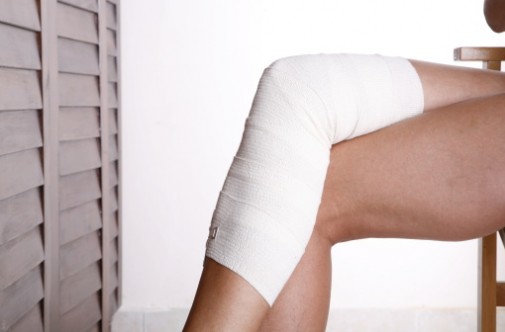Living with varicose veins

Some people may think treatment of varicose veins is simply a cosmetic fix, but experts say they can be a painful, life-altering condition and should be treated.
In fact, according to the Vascular Disease Foundation, an estimated 20 to 25 million Americans have varicose veins.
Dr. Scott Burstein, interventional radiologist on staff at Advocate Good Samaritan Hospital in Downers Grove, Ill., says that varicose veins can adversely affect people’s every day life.
“Sometimes people do not want to go out of the house because they are embarrassed or do not want to wear shorts in the summer because of the veins in their legs,” he says. “Or for some people the extreme pain makes them unable to stand or walk for a long period of time to follow through with their daily activities.”
Dr. Burstein says that varicose veins can also ultimately lead to other more serious conditions such as chronic ulcers and inflammation of the vein caused by a blood clot. Varicose veins develop when the valves in the veins become leaky or incompetent, he says.
“When this happens, the blood flows backwards in the vein rather than forwards and causes an increased pressure triggering the veins to enlarge to accommodate the poor blood outflow,” Dr. Burstein says. “They then become dilated, bulging and painful.”
Dr. Burstein says some symptoms of varicose veins include:
- Burning
- Itching
- Pain or heaviness
- Bleeding
- Phlebitis
- Skin changes
- Ulceration
“Symptoms can occur throughout the day and tend to get worse at the end of the day,” he says. “Symptoms are worse with prolonged standing and usually improve when you elevate your legs.”
Treatment Options
Dr. Burstein says that there are self-care options for people to do at home to help alleviate pain from varicose veins.
“Medical grade compression stockings, avoiding prolonged standing and elevating your legs can help relieve pain from varicose veins,” he says. “The support hose will keep the vein compressed so they don’t fill with blood from the insufficient or refluxing superficial vein.”
Dr. Burstein says there are three types of minimally invasive procedures that can take care of varicose veins: a Microphlebectomy, Sclerotherapy and the newest option, Endovenous Laser Therapy (EVLT).
“A Microphlebectomy treats veins close to the skin’s surface and are removed by small punctures, leaving almost no scarring,” he says. “Sclerotherapy involves injecting a solution into the varicose vein to reduce the size of the vein, ultimately making it disappear over a short time.”
Dr. Burstein explains that EVLT is a new laser vein treatment where a thin fiber is inserted into the damaged vein. A laser light is emitted through the fiber, delivering the right amount of energy. The targeted tissue reacts with the light, causing the vein to close and seal shut.
“EVLT is a short, simple and non-invasive procedure that has people back on their feet and back to regular activities in just a few days,” he says.
Related Posts
Comments
3 Comments
About the Author
Sarah Scroggins, health enews contributor, is the director of social media at Advocate Health Care and Aurora Health Care. She has a BA and MA in Communications. When not on social media, she loves reading a good book (or audiobook), watching the latest Netflix series and teaching a college night class.


















We practice EVLT at our varicose vein clinic in Raleigh and have found great success with our patients. Those with varicose veins should get have their veins checked out by certified vascular surgeon to rule out any underlying venous complications before undergoing any form of treatment.
Great article! Vein clinics in Chicago offer laser treatment, sclerotherapy, and phlebectomy as alternatives to vein stripping. How do I decide which treatment to go with?
When I was pregnant of my second child some varicose veins started to appear on my legs, at that time I wasn’t really worried, but as they got worse I started to get worried so I visited a specialist who recommended me venorid treatment. Also, I’ve been exercising at least three times a week.